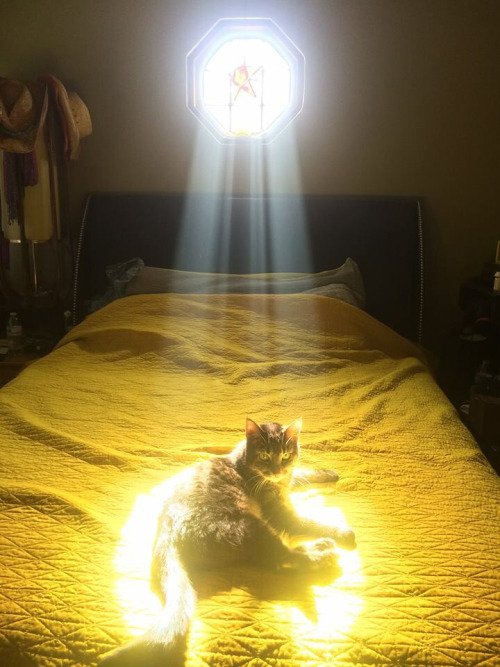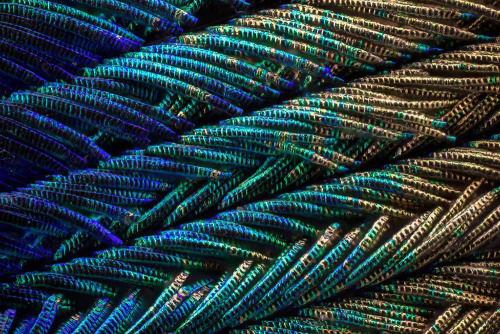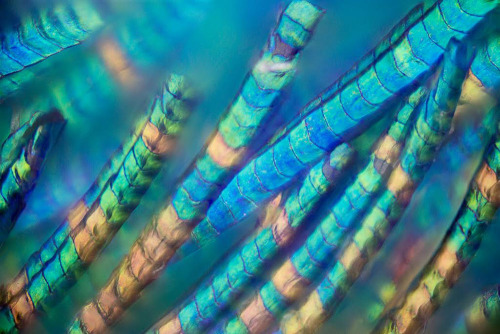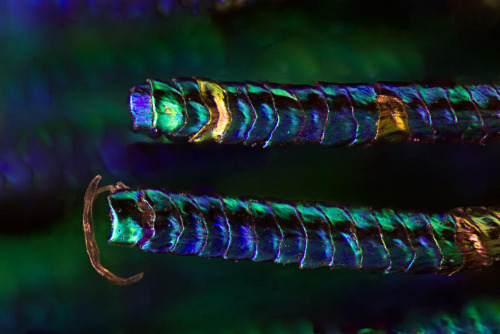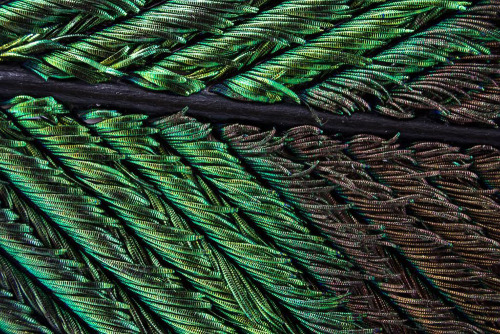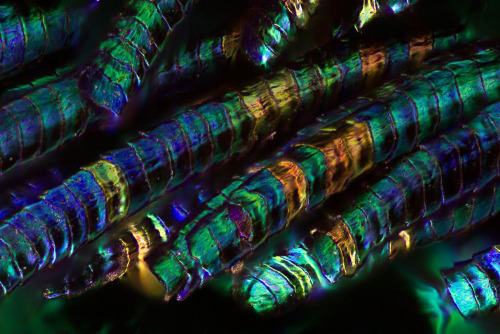Secretagentpeptidebond - Mostly Harmless.

More Posts from Secretagentpeptidebond and Others

Three muscle fibers; the middle has a defect found in some neuromuscular diseases
Of the three muscle fibers shown here, the one on the right and the one on the left are normal. The middle fiber is deficient a large protein called nebulin (blue). Nebulin plays a number of roles in the structure and function of muscles, and its absence is associated with certain neuromuscular disorders.
Image courtesy of Christopher Pappas and Carol Gregorio, University of Arizona. Part of the exhibit Life:Magnified by ASCB and NIGMS.
@ultrainfinitequest
In his classic tale Journey to the Center of the Earth, author Jules Verne dreamed of reaching the center of our planet through volcanic tubes. In the 1960s, scientists took up that challenge and tried to drill down into the earth’s mantle, but abandoned the project due to a lack of funding. Now, a team of scientists aboard the research vessel JOIDES Resolution is working to bore a hole deep into the Atlantis Bank in the Indian Ocean to collect samples of the crust and eventually break through into the mantle. Geologist Henry Dick, co-chief scientist of the expedition, joins Ira for an update on the progress of the project and explains what these samples could reveal about the formation of the planet.




This beautifully diverse group of sea slugs can be found in oceans worldwide, but its greatest variety is located in the magical habitat of warm, shallow reefs. It’s name comes from the Latin for “naked” (nudus), but it’s often informally called a “sea slug.” Today, a profile of a group of marine gastropods called Nudibranchia.
Unlike other mollusks (think snails), most nudibranchs have lost their shells, evolving other mechanisms for protection. For example, some are able to ingest and retain poisons found in prey, later secreting them for defense.
All known nudibranchs are carnivorous, feeding on a variety of sea life including sponges, other sea slugs, and barnacles. One species, Glaucus atlanticus, is known to prey on the Portuguese man o’ war!
Hermaphroditic, nudibranchs have a set of reproductive organs for both sexes, which means any creature can mate with another. That said, a nudibranch can’t fertilize itself.
According to National Geographic, “some nudibranchs are solar-powered, storing algae in their outer tissues and living off the sugars produced by the algae’s photosynthesis.”
The creature has very simple eyes (able to distinguish little more beyond light and dark), but have cephalic (head) tentacles that are sensitive to touch, taste, and smell. Its gills are uncovered, located behind their heart, and protrude in plumes on their back, making for a large surface area that grants more efficient oxygen exchange.
(Image Credits: Creative Commons, clockwise, richard ling, Raymond, Peter Liu Photography / Source: National Geographic, Wikimedia Commons, Earth Touch, Murky Secrets: The Marine Creatures of the Lembeh Strait)




PUMPKIN-SPICED FLUORESCENCE
Inside a pumpkin, seeds don’t need much chlorophyll—the molecule that helps plants convert light into food—because there isn’t a lot of light deep inside the fruit’s flesh. Instead of chlorophyll, the green seeds are chock-full of protochlorophyllide, a highly fluorescent molecule that glows orange-red under ultraviolet light and can be converted into chlorophyll a by an enzyme in the seeds. The enzyme reduces protochlorophyllide to produce chlorophyll when the enzyme encounters light, which occurs only after the seed has left the pumpkin and therefore needs to start producing its own food so it can grow. Helmut Brandl, a science communicator and professor at ETH Zurich, extracted this protochlorophyllide by grinding up pumpkin seeds and mixing them with nail polish remover (bottom row).
Submitted by Helmut Brandl
Enter our photo contest here!
Related C&EN content:
Happy Little Plant Cells
Look Deep Inside
Stupid Lab Mistakes: a Constant Across All Levels of Experience
So today was day one of a tyrosinase lab. We had to centrifuge our organic matter sample (homogenized mushroom gills) to separate the soluble proteins from the rest of the tissue, and we counterbalanced our sample with an identical centrifuge tube of equal weight filled with water. We did all of this under the supervision of a TA and our professor.
My lab partners and I have used centrifuges many times before, but what we (and the instructors) failed to notice was that these particular tubes required an adapter for this particular centrifuge. We were spinning it up to about 7000 rcf when we heard a muffled “bang,” then the centrifuge slowed to a stop. When we opened it up, we discovered that the water tube had EXPLODED, shattering into a hundred little plastic pieces. the tube containing our organic sample slurry was thankfully intact, but it was badly warped and cracked. We spent the next 20 minutes or so carefully wiping water off every nook and cranny of the centrifuge interior, thanking our lucky stars that it wasn’t mushroom gloop.
I keep thinking that gaining more practical lab experience will save me from this kind of thing, but if the three different generations of chemists present couldn’t keep it from happening then there is no hope. These incidents are the things that add unexpected excitement to my life, though, so I suppose it’s not all bad.
Solar System: 2016 Preview
What do we have planned for 2016? A return to the king of planets. A survey of mysterious Ceres. More postcards from Pluto. Anyone who follows solar system exploration in 2016 is in for quite a ride. Last year was one for the record books – and now here are 10 things to look forward to in the new year. See also: what we have planned agency wide for 2016.
Juno Arrives at Jupiter

July 4, 2016 is arrival day for the Juno mission, the first sent expressly to study the largest planet in the solar system since our Galileo mission in the 1990s. Humans have been studying Jupiter for hundreds of years, yet many basic questions about the gas world remain: How did it form? What is its internal structure? Exactly how does it generate its vast magnetic field? What can it tell us about the formation of other planets inside and outside our solar system? Beginning in July, we’ll be a little closer to the answers.
OSIRIS-REx Takes Flight
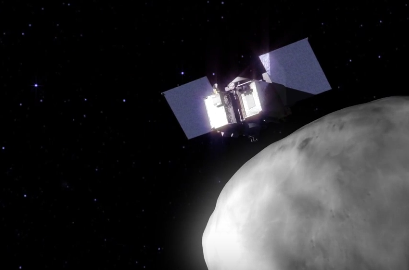
The OSIRIS-REx mission, short for Origins-Spectral Interpretation-Resource Identification-Security-Regolith Explorer, sets sail for an asteroid in September. The spacecraft will use a robotic arm to pluck samples from the asteroid Bennu to help better explain our solar system’s formation and even find clues to how life began.
Dawn Sees Ceres Up Close

After an odyssey of many years and millions of miles, in December the Dawn spacecraft entered its final, lowest mapping orbit around the dwarf planet Ceres. The intriguing world’s odd mountains, craters and salty deposits are ready for their close-ups. We can expect new images of the starkly beautiful surface for months.
Cassini Commences Its Grand Finale

In late 2016, the Cassini spacecraft will begin a daring set of orbits called the Grand Finale, which will be in some ways like a whole new mission. Beginning this year and extending into next, the spacecraft will repeatedly climb high above Saturn’s poles, flying just outside its narrow F ring 20 times. After a last targeted Titan flyby, the spacecraft will then dive between Saturn’s uppermost atmosphere and its innermost ring 22 times. As Cassini plunges past Saturn, the spacecraft will collect rich and valuable information far beyond the mission’s original plan.
New Horizons Sends More Postcards from Pluto

We have stared slack-jawed at the images and discoveries from last year’s Pluto flyby, but the fact is that most of the data that New Horizons collected remains on board the spacecraft. In 2016, we’ll see a steady release of new pictures — and very likely some expanded answers to longstanding questions.
Mars Missions March Forward
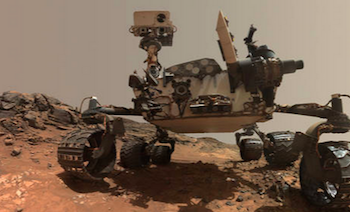
With five of our missions continuing their Martian quests, 2016 should be a good year for discoveries on the Red Planet.
Mars Odyssey
Mars Opportunity
Mars Reconnaissance Orbiter
Mars Curiosity
MAVEN
Mercury Transits the Sun

A transit is a very rare astronomical event in which a planet passes across the face of the sun. In May, Mercury will transit the sun, on of only thirteen Mercury transits each century on average.
LRO Keeps an Eagle Eye On the Moon

The Lunar Reconnaissance Orbiter (LRO) will extend its run in 2016, scanning the moon’s surface with its sharp-eyed instruments, investigating everything from lava tube skylights to changes at the Apollo landing sites.
Spacecraft Fly Under Many Flags

Our partner agencies around the world will be flying several new or continuing planetary missions to destinations across the solar system:
Akatsuki at Venus
ExoMars
Mars Express
Mars Orbiter Mission
Rosetta at Comet 67/P
Technology Demonstration Missions Push the Envelope
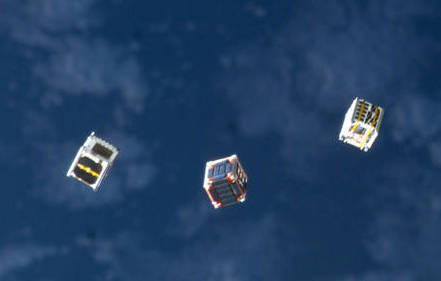
We’re always looking for new frontiers on distant worlds, as well as the technology that will take us there. This year, several missions are planned to take new ideas for a spin in space:
Deep Space Atomic Clock
NODES
LDSD
Make sure to follow us on Tumblr for your regular dose of space: http://nasa.tumblr.com

Cuprite, Chrysocolla
Locality:
Clara Mine, Rankach valley, Oberwolfach, Wolfach, Black Forest, Baden-Württemberg, Germany
Cuprite is commonly found as an oxidation product of copper sulphides in the upper zones of veins, often associated with Native Copper, Malachite,Azurite, Limonite and Chalcocite. A fibrous form of Cuprite is known as Chalcotrichite
Photo: Michael Förch
-
 theincubuscorp liked this · 4 weeks ago
theincubuscorp liked this · 4 weeks ago -
 eagleharp-twentythree reblogged this · 4 weeks ago
eagleharp-twentythree reblogged this · 4 weeks ago -
 evilplumpie reblogged this · 4 weeks ago
evilplumpie reblogged this · 4 weeks ago -
 atuats-sidechick reblogged this · 4 weeks ago
atuats-sidechick reblogged this · 4 weeks ago -
 atuats-sidechick liked this · 4 weeks ago
atuats-sidechick liked this · 4 weeks ago -
 dreamycastaway reblogged this · 4 weeks ago
dreamycastaway reblogged this · 4 weeks ago -
 thedarkstrategist reblogged this · 1 month ago
thedarkstrategist reblogged this · 1 month ago -
 eclectichellmouth reblogged this · 1 month ago
eclectichellmouth reblogged this · 1 month ago -
 simsimousse liked this · 2 months ago
simsimousse liked this · 2 months ago -
 pahman111 liked this · 5 months ago
pahman111 liked this · 5 months ago -
 chabileo liked this · 6 months ago
chabileo liked this · 6 months ago -
 babaistrans reblogged this · 6 months ago
babaistrans reblogged this · 6 months ago -
 ghost-zoast reblogged this · 6 months ago
ghost-zoast reblogged this · 6 months ago -
 ghost-zoast liked this · 6 months ago
ghost-zoast liked this · 6 months ago -
 sammusbird reblogged this · 6 months ago
sammusbird reblogged this · 6 months ago -
 rejnka-old liked this · 8 months ago
rejnka-old liked this · 8 months ago -
 bunnyliquefaction liked this · 9 months ago
bunnyliquefaction liked this · 9 months ago -
 dee-daa liked this · 10 months ago
dee-daa liked this · 10 months ago -
 djsangos reblogged this · 11 months ago
djsangos reblogged this · 11 months ago -
 therealslimstrider reblogged this · 11 months ago
therealslimstrider reblogged this · 11 months ago -
 pawnshopsouls liked this · 11 months ago
pawnshopsouls liked this · 11 months ago -
 skulltramarine reblogged this · 11 months ago
skulltramarine reblogged this · 11 months ago -
 pplhood reblogged this · 1 year ago
pplhood reblogged this · 1 year ago -
 darknovalatte liked this · 1 year ago
darknovalatte liked this · 1 year ago -
 prowl-autism-extraordinaire reblogged this · 1 year ago
prowl-autism-extraordinaire reblogged this · 1 year ago -
 gamelpar reblogged this · 1 year ago
gamelpar reblogged this · 1 year ago -
 charisgreywolf liked this · 1 year ago
charisgreywolf liked this · 1 year ago -
 melonkneesimblr liked this · 1 year ago
melonkneesimblr liked this · 1 year ago -
 bear-fangs liked this · 1 year ago
bear-fangs liked this · 1 year ago -
 oops-theinternet liked this · 1 year ago
oops-theinternet liked this · 1 year ago -
 ro-hd liked this · 1 year ago
ro-hd liked this · 1 year ago -
 esphaver liked this · 1 year ago
esphaver liked this · 1 year ago -
 mega-millk reblogged this · 1 year ago
mega-millk reblogged this · 1 year ago -
 mega-millk liked this · 1 year ago
mega-millk liked this · 1 year ago -
 ibm7094lover liked this · 1 year ago
ibm7094lover liked this · 1 year ago -
 mariposatormenta reblogged this · 2 years ago
mariposatormenta reblogged this · 2 years ago -
 the-blug reblogged this · 2 years ago
the-blug reblogged this · 2 years ago -
 dragonwaggon liked this · 2 years ago
dragonwaggon liked this · 2 years ago -
 cyanocoraxx liked this · 2 years ago
cyanocoraxx liked this · 2 years ago -
 dragondays37 liked this · 2 years ago
dragondays37 liked this · 2 years ago -
 saltyseabrine liked this · 2 years ago
saltyseabrine liked this · 2 years ago -
 a-tiny-wizard liked this · 2 years ago
a-tiny-wizard liked this · 2 years ago -
 f-a-b-l-e reblogged this · 2 years ago
f-a-b-l-e reblogged this · 2 years ago -
 saturniidspectre liked this · 2 years ago
saturniidspectre liked this · 2 years ago -
 burnout-stars reblogged this · 2 years ago
burnout-stars reblogged this · 2 years ago -
 asetyoubet liked this · 2 years ago
asetyoubet liked this · 2 years ago -
 itsanendgame reblogged this · 2 years ago
itsanendgame reblogged this · 2 years ago
